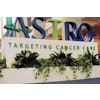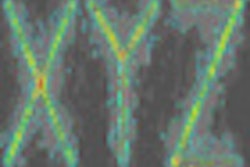A pair of recently published studies reported encouraging outcomes for electronic brachytherapy, a relatively new technology that offers the possibility of performing more sophisticated breast radiation therapy without the radiation shielding requirements used in more conventional external-beam treatments.
Radiation oncologists have been using external-beam radiation therapy systems for new applications as alternatives to traditional whole-breast radiation, such as accelerated partial-breast irradiation (APBI) and intraoperative radiation therapy (IORT). But sites must have extensive radiation shielding in place before they can use external-beam systems.
Mobile electronic brachytherapy systems offer the potential of being able to provide radiation therapy through balloon-based catheter delivery systems. These can eliminate the need for shielding and enable users to offer the new treatments to a greater number of cancer patients at relatively low cost.
Use of this electronic brachytherapy technology to treat breast cancer patients is quite new, and two recent studies reported positive outcomes of treatment efficacy when used for both APBI and also for IORT with women who have low-risk early-stage breast cancer.
IORT one-year outcomes report
So far, so good! That summarizes the results for 11 low-risk, early-stage breast cancer patients who participated in a single-institution trial to evaluate the effectiveness and toxicity of a single radiation therapy treatment at the time of surgery. Twelve-month follow-up results were published online August 25, 2010, in the Annals of Surgical Oncology.
The trial at the Little Company of Mary Hospital, a Chicago-area suburban community hospital located in Evergreen Park, enrolled patients over 12 months commencing September 2008. The patients ranged in age from 56 to 83 years. Prior to having a lumpectomy, all had a preoperative MRI exam to exclude mutifocality or multicentricity of cancers.
Six of the patients had invasive ductal carcinoma, and six had ductal carcinoma in situ. The mean tumor size was 1.2 cm, none of the patients had nodal involvement, and all final margins of resection were free of cancer. If the final pathology after surgery identified that margins were not clean, these patients would have been given conventional radiation therapy treatment, according to principal investigator Adam Dickler, MD, a radiation oncologist. If cancer had been detected in the sentinel node, the patient would not have been eligible for the IORT treatment.
All patients had a sentinel lymph node biopsy, followed by a lumpectomy. In the operating room, after the hospital's pathology department notified the surgeon that lymph nodes were uninvolved with cancer, breast tissue dissection was carried down to the level of the pectoral fascia. A chest wall shield made of a pliable piece of lead was temporarily placed into the cavity to protect the heart, ribs, and lung from scattered radiation.
The surgeon placed a cavity evaluation device through a wound incision, which was filled to a desired predetermined volume, followed by a balloon inserted into the cavity. Intraoperative ultrasound was used to assess balloon-to-tissue conformity and balloon-to-skin distance to verify that there was a minimum acceptable distance of 1 cm. After a lead-equivalent shield was placed over the breast, the radiation source was inserted into the balloon.
The radiation treatment took an average time of 22 minutes. The electronic brachytherapy system (Axxent, Xoft, Sunnyvale, CA) used in the procedure delivered 20 Gy at the surface of the balloon applicator and 9 to 10 Gy at 1-cm depth. Upon completion, retention sutures, the balloon, and the lead shield were withdrawn, and the lumpectomy cavity was irrigated and closed in a standard manner. The mean total procedure time starting with the sentinel lymph node biopsy averaged 1 hour and 39 minutes, the authors reported.
The patients were followed one week, one month, and six months following treatment, as well as every six months for five years. Follow-up mammography exams have been performed on the affected breast every six months. As expected in this early point in the clinical trial, no cancer recurrence has been detected.
Toxicities were minimal. Immediately following the procedure, three patients had mild pain for several days and three patients had erythema, which resolved within a month. Two patients experienced grade 1 and grade 2 breast fibrosis at the six-month follow-up period, which had resolved by one year. All patients experienced breast edema, minimal and moderate skin thickening, and minimal and moderate architectural distortion.
All 11 patients rated their cosmesis as excellent; physicians concurred with 10 out of 11 of these assessments. None of the patients experienced any infections, fat necrosis, desquamation, or rib fracture.
Dickler and colleagues are continuing to offer this treatment to qualified patients. Eligibility requirements include being older than 45, a histology of unifocal tumors with infiltrating ductal carcinoma or ductal carcinoma in situ, and a tumor size of 3 cm or less.
Outcomes of APBI
Meanwhile, in a phase IV study, researchers at 10 cancer treatment centers in the U.S. evaluated the safety and performance of the Xoft device as adjuvant therapy for early-stage breast cancer. They reported that the system performed as expected in an article published in the August issue of the American Journal of Clinical Oncology (Vol. 33:4, pp. 327-335).
The study objectives were to evaluate successful delivery of the prescribed radiation treatment and to identify device-related serious adverse events, according to principal investigator Vivek Mehta, MD, a radiation oncologist at the Swedish Cancer Institute in Seattle, and colleagues. A total of 65 patients were enrolled between March 2007 and March 2008, of whom 21 proved to be ineligible for the treatment.
Eligibility criteria required that the patients be older than 50, have completely resected T1 invasive ductal cancer or ductal carcinoma in situ less than 2 cm in diameter, and have negative lymph node status. Surgical margins needed to be negative to at least 1 mm, and skin spacing between the balloon surface and the surface of the skin had to be at least 7 mm.
Following breast conservation surgery, a balloon applicator was selected for optimal fit within the lumpectomy cavity. It was placed at a separate visit following the lumpectomy. Patients received a radiation dose of 3.4 Gy per fraction, with 10 fractions delivered to 1 cm beyond the balloon surface in two treatments per day separated by at least six hours. All but two of the 44 eligible patients completed the treatment.
Balloon deflations occurred eight times in seven patients, and they were replaced in four patients. Two patients withdrew from the study after the balloons were removed, and one patient who had received nine of the 10 fractions stopped treatment entirely.
One air bubble was also reported, at 7 mm in height by 14 mm in diameter. The patient experienced grade 3 toxicity on her skin that was identified at the time of her one-month follow-up. The authors calculated that this patient had received a 23% increase in skin dose due to the air in the balloon.
No equipment-related serious adverse events occurred, according to the authors.
Five patients, or 11%, experienced infections. There were nine occurrences of seromas, seven of which were reported at one-year follow-up, and two of which resolved within 90 days following treatment. Almost half of the patients experienced mild to moderate erythema. Blistering, moist desquamation, and breast tenderness were reported as grade 3 toxicities in four cases.
The research team reported that one month after treatment, cosmesis was good or excellent with minimal or no identifiable effects of radiation for the overwhelming majority (80%) of the patients. At 90-day follow-up, 91% had a good or excellent rating, but this declined at one-year follow-up to 75%. Twenty-six patients consented to rating their cosmesis as excellent (13), good (11), fair (7), and poor (1).
Thirty-six patients agreed to be followed for five years to enable the researchers to further assess treatment efficacy and long-term effects.
By Cynthia E. Keen
AuntMinnie.com staff writer
September 22, 2010
Related Reading
TARGIT-A data show intraoperative RT equals whole-breast radiation, June 29, 2010
Long term APBI outcomes are comparable in low-risk patients, May 31, 2010
New studies hint that APBI could be used in more patients, December 22, 2009
ASTRO publishes APBI guidelines for early-stage breast cancer, July 16, 2009
Copyright © 2010 AuntMinnie.com



















